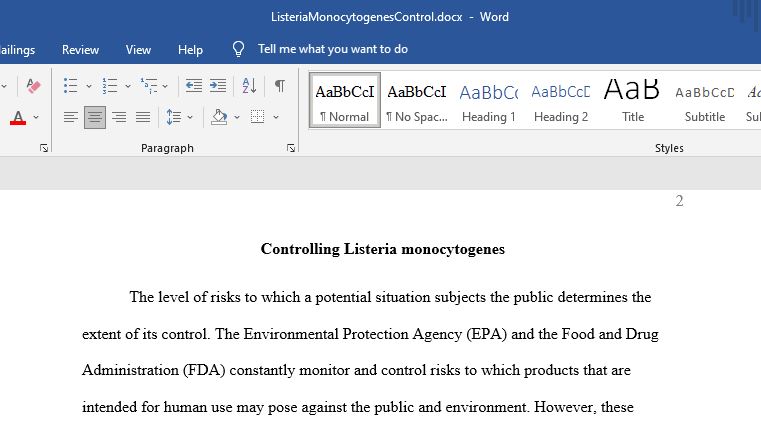Discussion topic-Controlling Listeria monocytogenes
1. Should contamination to foods be regulated using “permissible exposure levels” or a “complete ban”? (20 points)
This quarter, we have considered how different classes of pollutants are regulated within the same law. For example, under the Clean Air Act, more stringent approaches are used for criteria pollutants (health-based standards) compared to hazardous air pollutants (technology-based standards). The Clean Water Act regulates point sources using the NPDES program, while Best Management Practices (which are unenforceable) limit pollution from non-point sources. The FDA regulates food safety under the Federal Food, Drug, and Cosmetic Act (FFDCA); in 1996, regulation of pesticides was switched from the FDA to the EPA. The EPA has set tolerance levels for pesticides, rather than a complete ban on pesticides. The case study presented by Joy Waite-Cusik on romaine lettuce, suggests that we should consider using permissible exposure levels (or tolerance levels) rather than a complete ban on certain pathogens in food.
Focusing on specific pathogen (Listeria monocytogenes), should FDA (or EPA) regulate the pathogen using (less stringent) permissible exposure levels or a complete ban? What are the pros and cons of each approach? Justify your answer.
No specific length mentioned. Just need to answer the questions
Answer preview:

word limit:901
